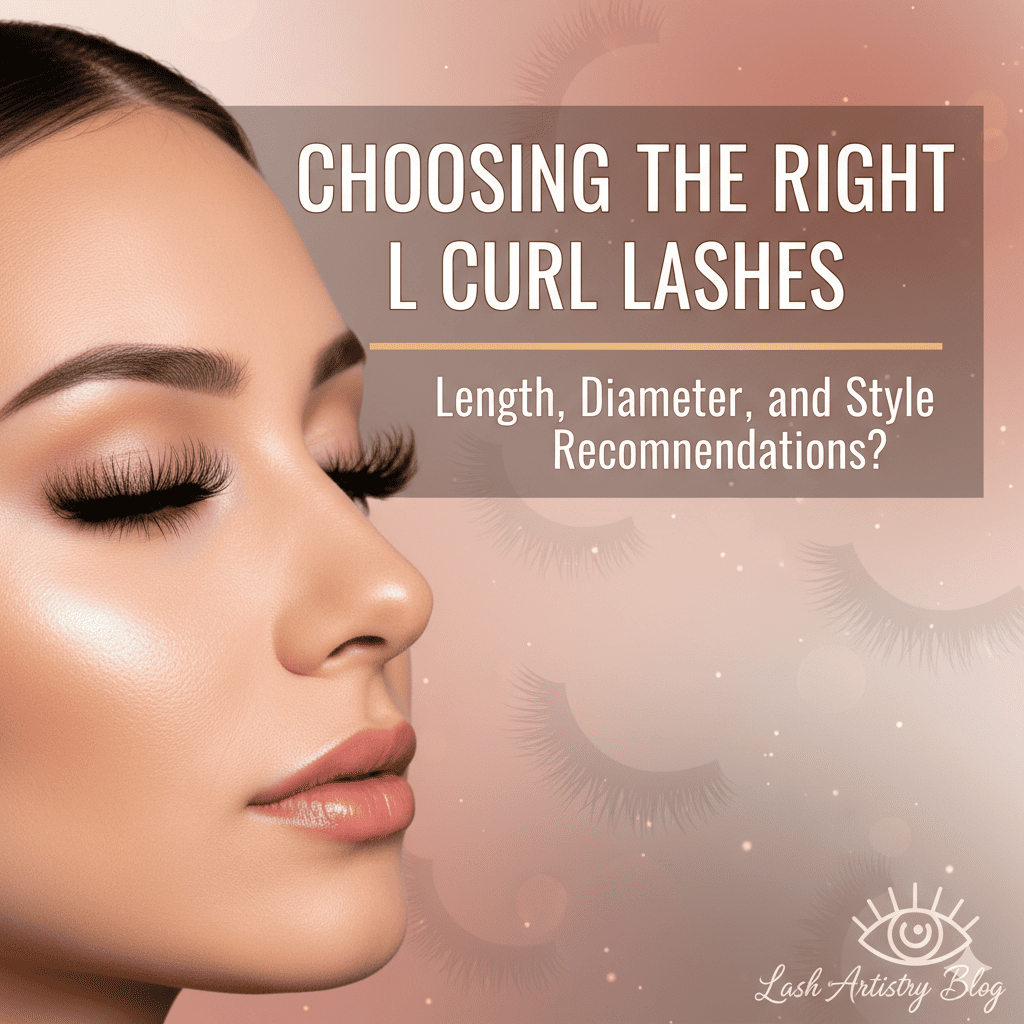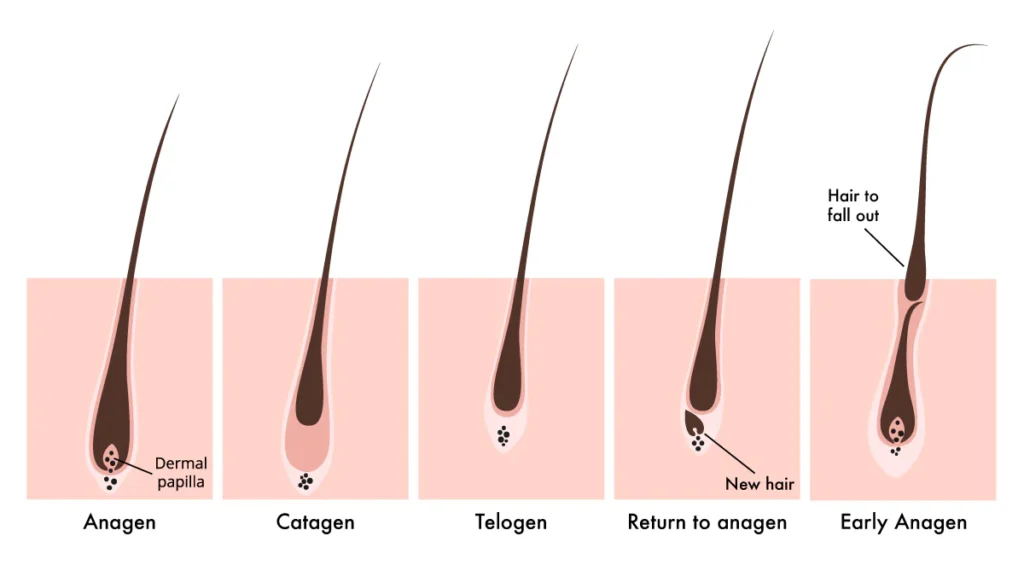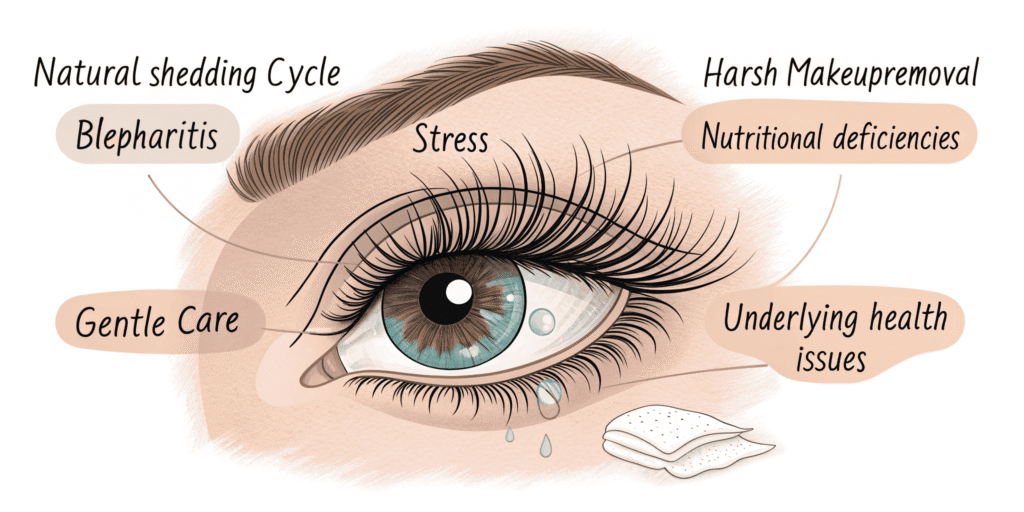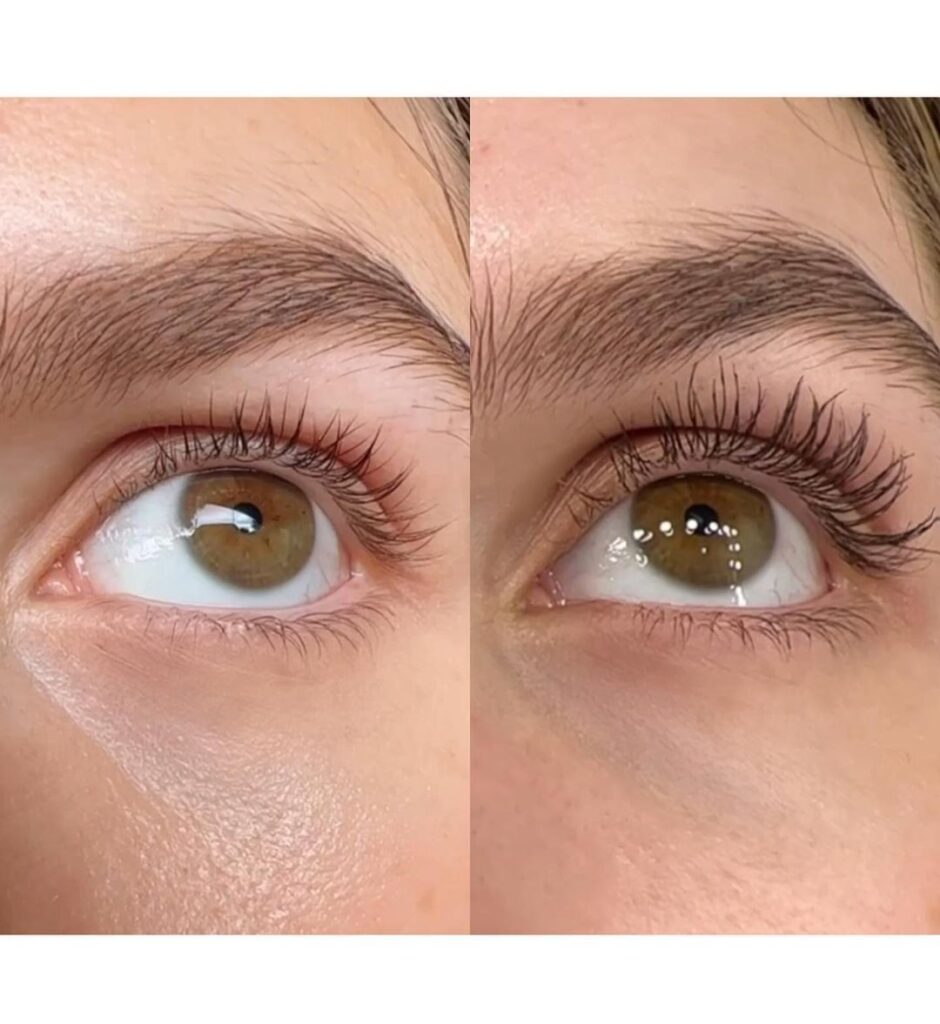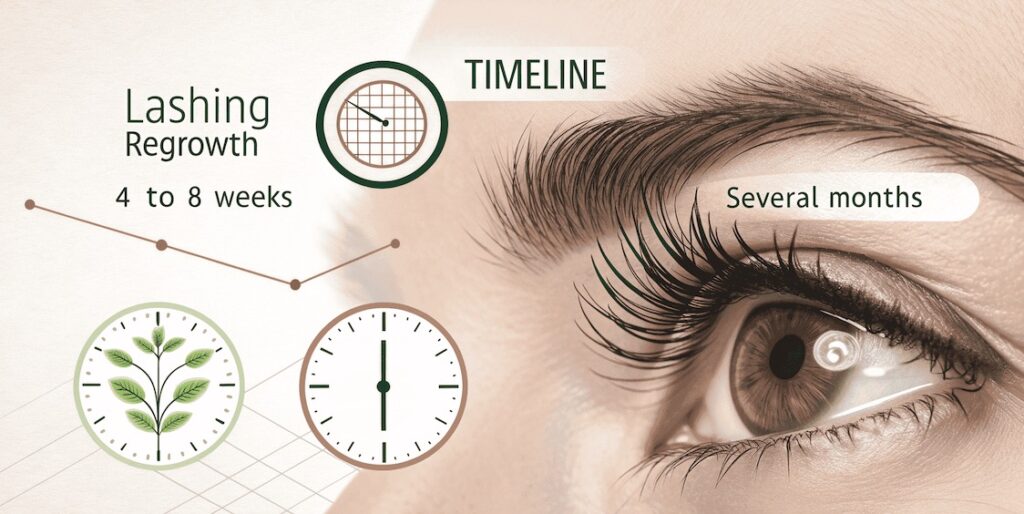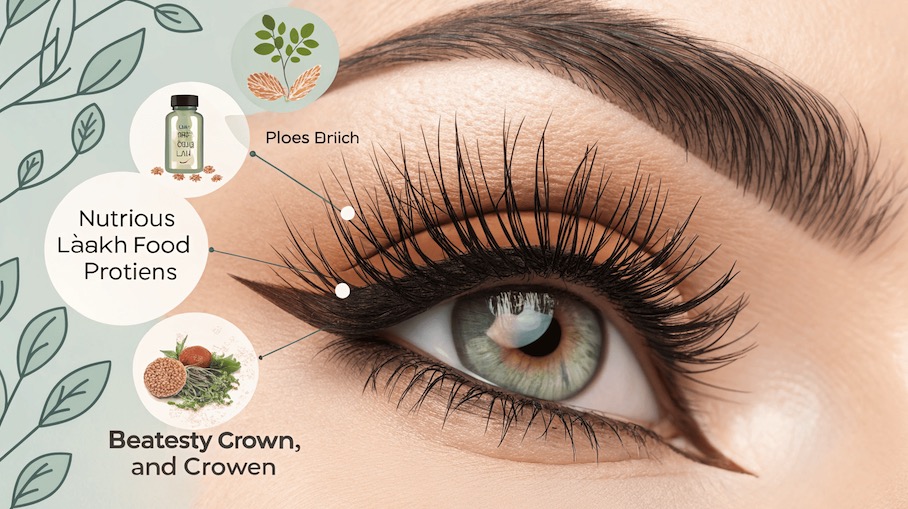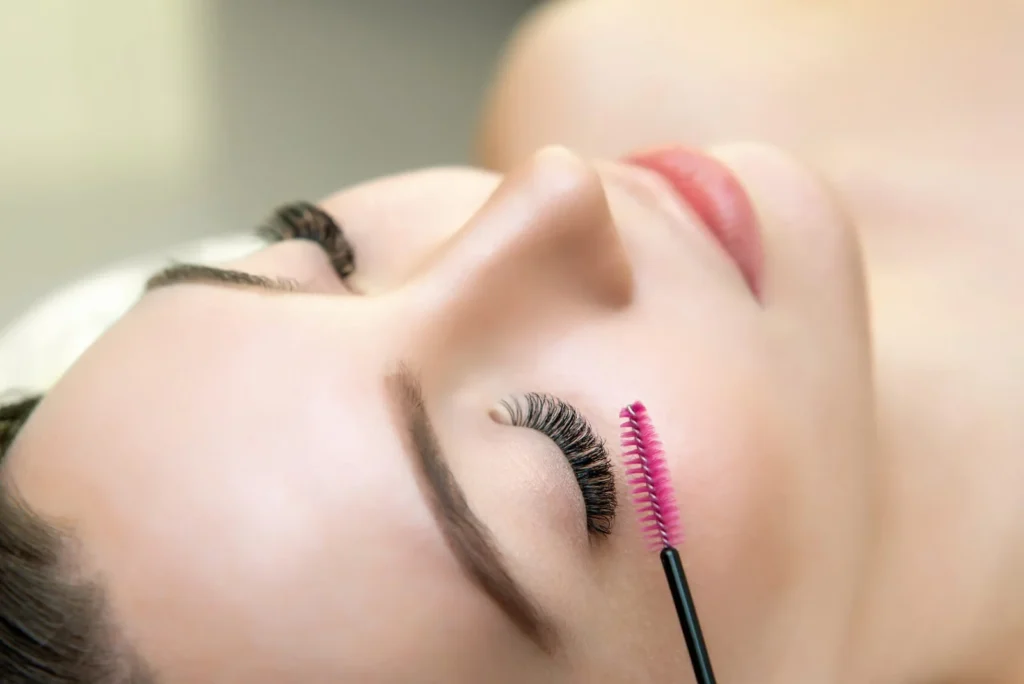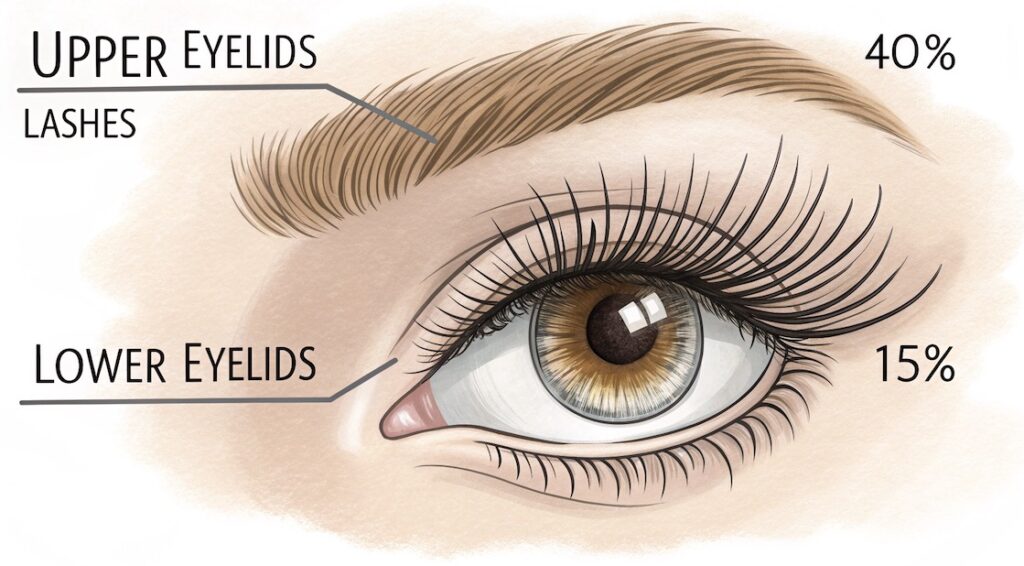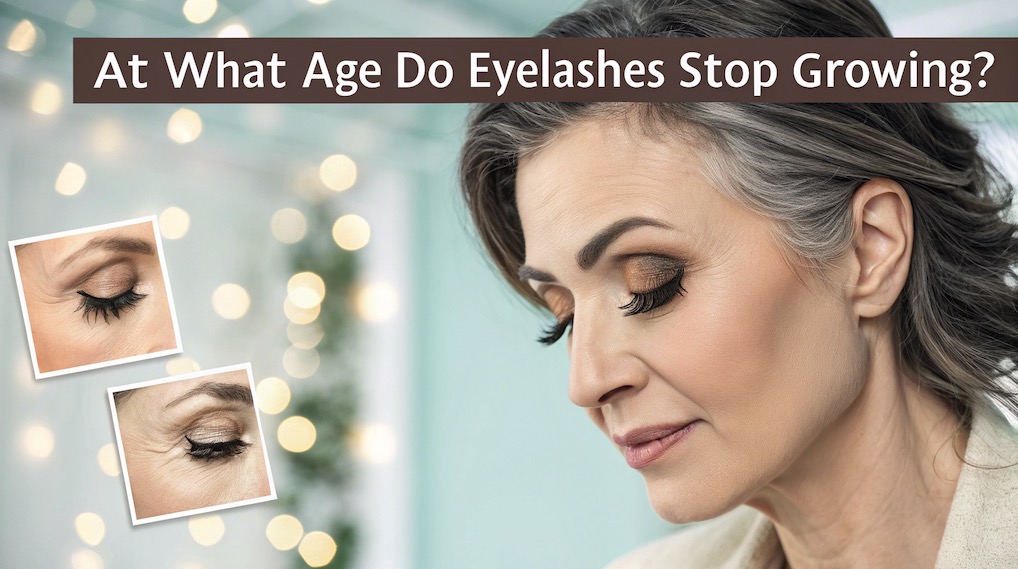Struggling with thinning lashes and wondering if they will ever recover? Many factors can cause lash loss, but understanding the natural growth process is the key.
Yes, lost eyelashes can regrow if the hair follicles are healthy [3, 9]. Eyelashes follow a three-phase cycle: growth, transition, and resting [1, 2]. Supporting this cycle with proper care can help you achieve healthier, fuller lashes over time [10, 17].
Seeing more lashes than usual on your cotton pad can be alarming. As the founder of UBLash, I get many questions from lash artists and salon owners about why this happens and what can be done. The journey to fuller lashes begins with understanding the science behind them. By learning about the growth cycle and the factors that influence it, you can take control of your lash health and promote strong, beautiful regrowth.
What are the Common Causes of Eyelash Loss and How Can I Prevent It?
Noticing more lashes on your makeup wipe? It could be anything from stress to your beauty routine. Pinpointing the cause is the first step to finding a solution.
The most common reason for lash loss is the natural shedding cycle [1, 18]. Other key factors include harsh makeup removal, medical conditions like blepharitis, stress, and nutritional deficiencies [17, 18, 20]. Prevention involves gentle care and addressing any underlying health issues [18, 20].
Losing between one and five eyelashes per day is completely normal and part of a healthy renewal process [2, 18]. However, when you notice an increase in shedding, it’s worth investigating the cause. Both internal and external factors can disrupt the delicate balance of your lash follicles. Addressing these issues not only helps in preventing future loss but also creates a better environment for regrowth. From simple habit changes to consulting a doctor, there are many ways to protect your precious lashes.
Top Reasons for Eyelash Loss
- The Natural Growth Cycle: Your lashes are in a constant state of renewal. The final stage, the telogen phase, ends with the lash shedding to make room for a new one [1, 21]. This is normal.
- Harsh Beauty Habits: Aggressively rubbing your eyes, using difficult-to-remove waterproof mascara, or improperly using an eyelash curler can cause breakage and premature shedding [1, 10, 18, 26]. Lash extensions, if applied or removed incorrectly, can also damage natural lashes [29, 36].
- Medical Conditions and Medications: Health issues such as thyroid conditions, alopecia, and eyelid inflammation (blepharitis) can lead to lash loss [17, 20, 22]. Certain medications, including chemotherapy, are also known causes [3, 9, 36].
- Stress and Nutrition: High levels of stress can push hair follicles into the resting phase prematurely [3, 9, 36]. Similarly, deficiencies in key nutrients like iron, protein, and biotin can weaken lashes and inhibit growth [1, 17, 20].
| Cause | Prevention Tip |
|---|---|
| Harsh Beauty Habits | Use a gentle, oil-free makeup remover and avoid tugging at lashes. Give your lashes a break from extensions and waterproof mascara [1, 20, 26]. |
| Medical Conditions | Consult a doctor to diagnose and treat any underlying health issues like thyroid imbalances or blepharitis [17, 18, 20]. |
| Stress | Incorporate stress-management techniques into your routine, as overall wellness impacts hair health [3, 9, 36]. |
| Nutritional Deficiencies | Eat a balanced diet rich in protein, biotin, iron, and vitamins A and C to support strong hair follicles [17, 20, 22]. |
Can You Really Regrow Lost Eyelashes?
Seeing gaps in your lash line can be alarming. Is it permanent, or just a waiting game? The answer lies in the health of your hair follicles.
In most cases, yes, eyelashes will regrow [3, 9]. As long as the hair follicle is healthy and undamaged, it is capable of producing a new lash after the old one sheds as part of the natural cycle [3, 17]. Patience is essential [2].
The ability to regrow eyelashes is one of the most reassuring aspects of lash biology. Our bodies are designed for renewal, and the lash cycle is a perfect example of this. When a lash falls out, whether from natural shedding or minor trauma, the follicle beneath the skin typically remains active and ready to start the process over again [3, 9]. This is why even after a bad experience with lash extensions or a period of stress-induced shedding, your lash line can recover.
However, the health of the follicle is the most important factor. If the follicle itself sustains severe and permanent damage—for instance, from a deep burn or a chronic, untreated infection—its ability to produce hair may be lost [3, 9, 34]. This is why protecting the delicate skin of your eyelid is so important. For the vast majority of common lash loss scenarios, the follicles remain intact, and regrowth is just a matter of time.
| Condition of Follicle | Regrowth Potential | Explanation |
|---|---|---|
| Healthy (Natural Shedding) | Excellent | Part of the normal growth cycle. A new lash is already preparing to grow [3, 17]. |
| Minor Trauma (e.g., Pulled out) | Good | The follicle is usually intact and will regrow a lash, though the cycle is disrupted and it may take longer [3, 10, 30]. |
| Severe Damage (e.g., Burn) | Poor to None | If the follicle is destroyed, it can no longer produce a hair [3, 9, 34]. |
How Long Does It Take for Eyelashes to Regrow?
You’re ready for your lashes to be back, but how long is the wait? The regrowth timeline isn’t one-size-fits-all and depends on several factors.
The time it takes for lashes to regrow varies, but a naturally shed lash is typically replaced in about 4 to 8 weeks [1, 21]. If a lash was pulled out or lost due to damage, it could take several months to return [3, 10, 30].
Patience is a virtue, especially when it comes to lash regrowth. The entire life cycle of an eyelash can last anywhere from four to eleven months, so seeing full results from any changes in your routine takes time [17, 20]. The specific cause of lash loss is the biggest factor influencing your personal timeline. If you’ve simply experienced natural shedding, the follicle is already preparing the next lash, and the process is relatively quick [1, 21].
However, if a lash is forcefully removed before its time, the follicle is interrupted and needs time to recover before it can begin a new anagen (growth) phase [10, 30]. The regrowth time after stopping chemotherapy can be a few weeks to several months [3, 9]. Similarly, if lashes were damaged by extensions, they should grow back in around six weeks, provided no permanent damage occurred [11, 36].
| Cause of Loss | Estimated Regrowth Time | Notes |
|---|---|---|
| Natural Shedding | 4 to 8 weeks [1, 21] | This is the fastest regrowth scenario. |
| Pulled Out / Lash Extensions | A few months [3, 29, 30, 36] | The growth cycle has been interrupted and needs to reset. |
| After Chemotherapy | Weeks to a few months [3, 9] | Hair may grow back with a different texture or color [3, 9]. |
| Burn (Follicle Intact) | ~6 weeks [3, 9, 29, 34] | Begins once the new growth cycle starts. |
What Helps Eyelashes Grow Back Quickly?
While you can’t truly speed up biology, you can create the perfect environment for it. Want faster, healthier growth? Here’s what actually works.
You cannot speed up the lash cycle itself, but you can support it for quicker, healthier results [2]. This involves a nutrient-rich diet with protein and biotin, using growth serums, and practicing gentle daily care to prevent breakage [1, 2, 10, 17].
(
Think of it as tending to a garden. You can’t force a seed to sprout overnight, but you can provide it with rich soil, water, and sunlight to help it thrive. The same principle applies to your lashes. To encourage them to grow to their full potential as quickly as possible, focus on nourishment from the inside out and protection from the outside in.
A balanced diet provides the essential building blocks, while targeted products and careful habits ensure the lashes you do grow are strong, healthy, and less prone to premature breakage [1, 17, 20].
Strategies for Faster Regrowth
- Eat a Healthy Diet: Your hair is made of protein, so a protein-rich diet is vital [17, 20]. Nutrients like biotin, iron, and vitamins A and C also support keratin production and cell growth, which are crucial for strong lashes [1, 17, 20, 22].
- Use a Lash Serum: Over-the-counter lash serums often contain ingredients like peptides and biotin to condition and strengthen lashes [1, 10, 15]. Prescription treatments like Latisse contain active ingredients that extend the growth phase [2, 14, 17].
- Practice Gentle Care: Be gentle. Avoid rubbing your eyes, use a mild, oil-free makeup remover, and don’t sleep in mascara [18, 20, 26]. Brushing your lashes daily with a clean spoolie can also stimulate follicles and remove debris [2, 35].
| Method | How It Helps | Examples |
|---|---|---|
| Dietary Support | Provides essential nutrients for hair follicle health and keratin production [17, 20]. | Chicken, fish, nuts, avocados, spinach, and berries [17, 20, 30]. |
| Topical Serums | Condition, strengthen, and nourish lashes to prevent breakage and support the growth phase [1, 10, 15]. | Serums containing peptides, biotin, and hyaluronic acid [12, 13, 15, 16]. |
| Gentle Hygiene | Prevents premature shedding and breakage, creating a healthy environment for growth [18, 20, 26]. | Careful makeup removal, avoiding waterproof mascara, and not using lash curlers too harshly [20, 26]. |
What Are the Best Ingredients in Eyelash Serums for Faster Growth?
The serum aisle is overwhelming. What ingredients actually deliver on their promises of longer, thicker lashes? Let’s separate the science from the hype.
The best eyelash serums contain ingredients like peptides, biotin, and amino acids to nourish and strengthen [12, 13, 15]. Hyaluronic acid offers hydration, while keratin and plant extracts condition them, helping to prevent breakage and support healthy growth [12, 14, 15].
When selecting a lash serum, the ingredient list is your best friend. Effective serums work by creating an optimal environment for your lashes to grow stronger and stay in the growth phase longer. Conditioning ingredients help prevent the brittleness that leads to breakage, meaning lashes can reach their full potential length. Strengthening ingredients fortify the lash structure itself. It’s also important to know what to avoid. Harsh chemicals like synthetic prostaglandins, parabens, and sulfates can cause irritation and have unwanted side effects [16].
Key Ingredients to Look For (and Avoid)
- Peptides: These are chains of amino acids, which are the building blocks of protein (what your lashes are made of). Peptides help nourish and strengthen lashes [12, 16].
- Biotin (Vitamin B7): This essential vitamin helps strengthen keratin, the protein that makes up hair, reducing brittleness and breakage [12, 15, 16].
- Hyaluronic Acid: A powerful hydrator, this ingredient helps moisturize lashes, making them look shinier and feel more flexible [12, 14].
- Plant-Based Ingredients: Extracts from sources like ginseng, red clover, and Swiss apple can provide antioxidants and other nutrients to support follicle health [1, 13, 21].
| Ingredient | Primary Function | Why It’s Effective |
|---|---|---|
| Peptides | Strengthening & Nourishing | Provides the building blocks (amino acids) needed to build strong lash proteins [12, 16]. |
| Biotin | Strengthening | Fortifies the keratin structure of lashes, making them less prone to breaking [12, 15]. |
| Hyaluronic Acid | Hydrating & Conditioning | Retains moisture, which keeps lashes flexible and prevents dryness and brittleness [12, 14]. |
| Prostaglandins | AVOID (unless prescribed) | While effective for growth, these hormone-like chemicals can cause irritation, skin darkening, and other side effects [13, 16]. |
What is the Optimal Timing for Applying Eyelash Extensions Based on the Lash Cycle?
Getting lash extensions? Timing is everything for longevity and lash health. Applying them at the wrong stage can lead to disappointment and premature shedding.
The best time to apply eyelash extensions is during the anagen (growth) phase [4, 5, 7]. Lashes in this stage are strong, healthy, and at the beginning of their life cycle, which ensures maximum retention and supports lash health [5, 6, 7].
A knowledgeable lash artist understands that not all lashes are created equal. To ensure a long-lasting and beautiful set of extensions, it’s crucial to select the right natural lashes for application. Applying an extension to a lash that’s about to shed is a waste of time and money. Applying one to a lash that’s too new and weak can cause damage. The "sweet spot" is a lash that is strong enough to support an extension and has a long way to go before it naturally falls out. This is why the anagen phase is considered ideal by most experts [4, 5, 6, 7].
Applying Extensions by Lash Phase
- Anagen (Growth) Phase: This is the prime time. These lashes are strong and firmly attached to the follicle [5, 7]. Applying an extension here means it will last for as long as possible as the natural lash continues its cycle [7].
- Catagen (Transition) Phase: It’s best to avoid these. The follicle is shrinking, and the lash is more fragile and likely to shed prematurely [5, 6, 8].
- Telogen (Resting) Phase: Applying extensions here is not recommended. These lashes are at the end of their life and will fall out soon, taking the extension with them [5, 7].
| Lash Phase | Suitability for Extensions | Reason |
|---|---|---|
| Anagen | Ideal | Strong, healthy lash at the beginning of its cycle; offers the longest retention [4, 5, 7]. |
| Catagen | Avoid | Lash is fragile and the follicle is shrinking; extension may fall out prematurely [5, 6, 8]. |
| Telogen | Avoid | Lash is near the end of its life and about to shed naturally; poor retention [5, 7]. |
Are There Differences in Growth Rates Between Upper and Lower Eyelashes?
Ever noticed your top lashes seem fuller and longer than the bottom ones? It’s not your imagination; there is a clear biological reason for the difference.
Yes, significant differences exist. The upper eyelid has far more lashes (up to 160) than the lower eyelid (up to 80) [1, 24]. Additionally, a higher percentage of upper lashes (about 40%) are in the active growth phase at any time compared to lower lashes (15%) [1, 10, 25].
The disparity between upper and lower lashes is a matter of both quantity and activity. Your upper lash line is simply more populated, giving it a naturally denser appearance [1, 24]. Each eyelid, upper and lower, has an average of 3-4 rows of lashes [23].
Furthermore, the growth cycles are programmed differently. With a much larger portion of its lashes in the anagen (growth) phase at any given moment, the upper lash line is constantly in a more active state of renewal and growth [1, 10, 25]. This contributes to the upper lashes generally appearing longer and fuller. While the daily growth rate of an individual lash is about the same for both, the sheer number and activity level of the upper lashes make them more prominent [3, 9, 24].
| Feature | Upper Eyelashes | Lower Eyelashes |
|---|---|---|
| Number of Lashes | 90-160 lashes per eye [1, 24] | 70-80 lashes per eye [1, 24, 25] |
| Lashes in Growth Phase | ~40% at any given time [1, 10, 25] | ~15% at any given time [1, 10, 25] |
| Average Length | Generally longer, up to 12mm [3, 9, 23, 24] | Generally shorter |
At What Age Do Eyelashes Stop Growing?
As we get older, we notice changes in our hair. But what about our lashes? Do they stop growing, or just evolve over time?
Eyelashes do not stop growing at a certain age; the growth cycle is lifelong [26, 28]. However, with age and related hormonal changes like menopause, the growth process can slow down, and lashes may become thinner, shorter, and less pigmented [1, 21, 27].
The good news is that your body never completely stops producing eyelashes. The follicles continue to cycle through the anagen, catagen, and telogen phases throughout your life [26, 28]. However, the efficiency of this cycle can diminish over time. As we age, the anagen (growth) phase may become shorter, meaning lashes don’t have as much time to grow long [1, 21]. The follicles themselves can shrink, producing finer and less robust hairs [27].
This process is a natural part of aging, much like the hair on our head becoming thinner or graying [27]. Hormonal shifts, particularly during menopause, can also contribute to a slowdown in hair production [1, 21]. So while you will continue to grow new lashes, they may not have the same length and fullness they did in your youth, making gentle care and nourishment even more important as you get older.
| Factor of Aging | Impact on Eyelashes |
|---|---|
| Shorter Anagen Phase | Lashes have less time to grow, resulting in shorter overall length [1, 21]. |
| Hormonal Changes | Can disrupt the hair growth cycle, leading to thinning and increased shedding [1, 21, 27]. |
| Follicle Function | Follicles may become less efficient, producing weaker and thinner lashes [27]. |
| Pigment Production | Like scalp hair, lash pigmentation can decrease, leading to lighter or grayer lashes [24]. |
Conclusion
Regrowing your eyelashes comes down to patience, proper care, and understanding their natural cycle [1, 2, 10]. By providing your body with good nutrition and protecting your lashes from damage, you can support healthy, strong growth at any age [17, 18, 20].

Fanny
Lash Technician
Hi, I’m Fanny, the author of this post.
Over the past 5 years, we have assisted numerous lash salons and technicians across 20 countries to build their lash brand and grow their businesses with high-quality lash extension products.
If you have any questions or need assistance, feel free to reach out for a free consultation or to discuss tailored solutions for your business needs.
More Interesting Posts
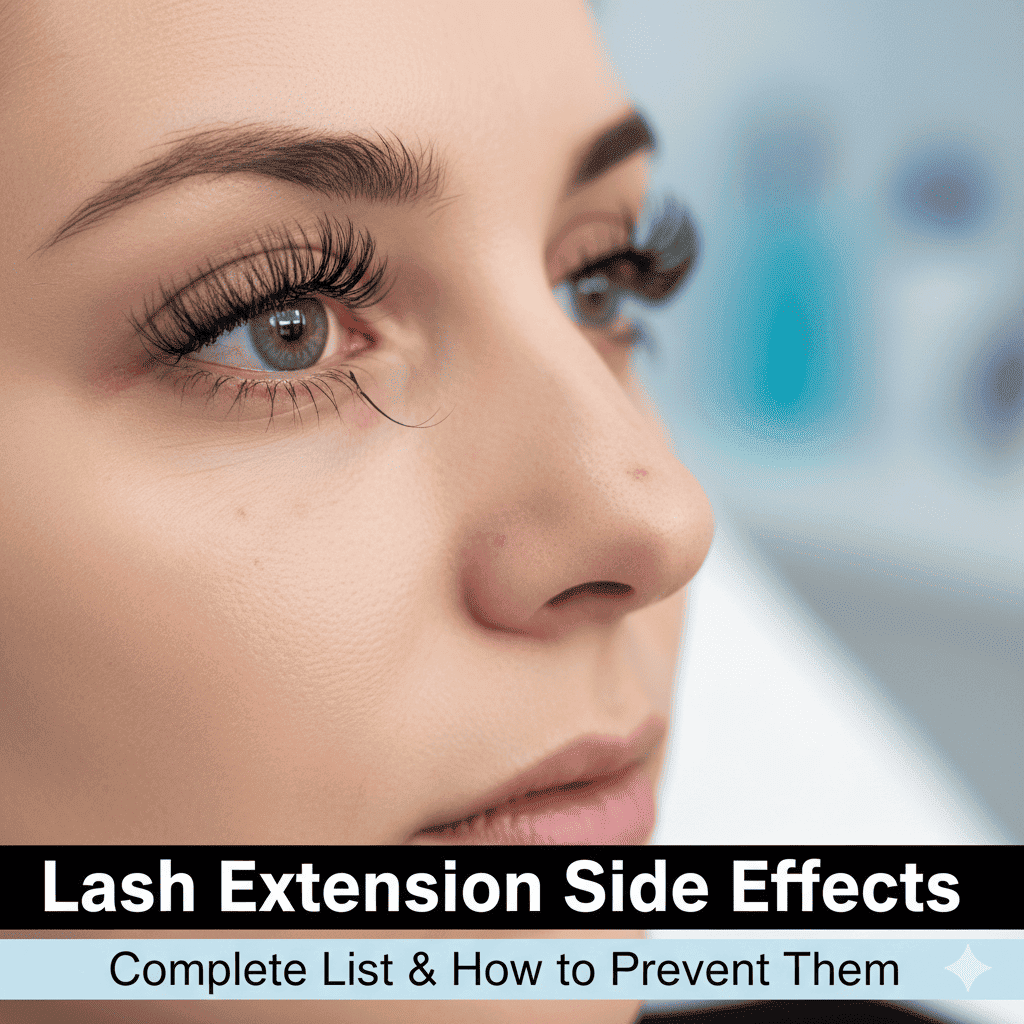
Lash Extension Side Effects: Complete List & How to Prevent Them
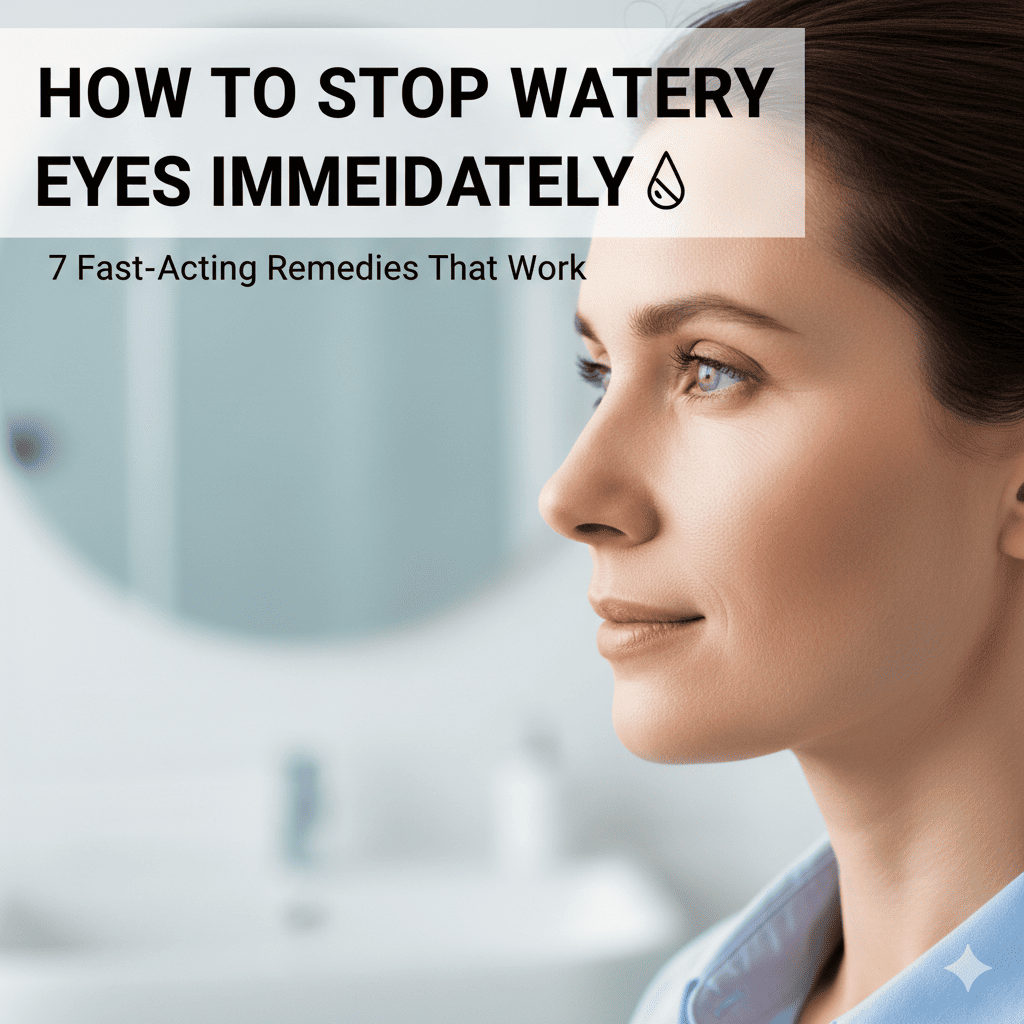
How to Stop Watery Eyes Immediately: 7 Fast-Acting Remedies That Work
